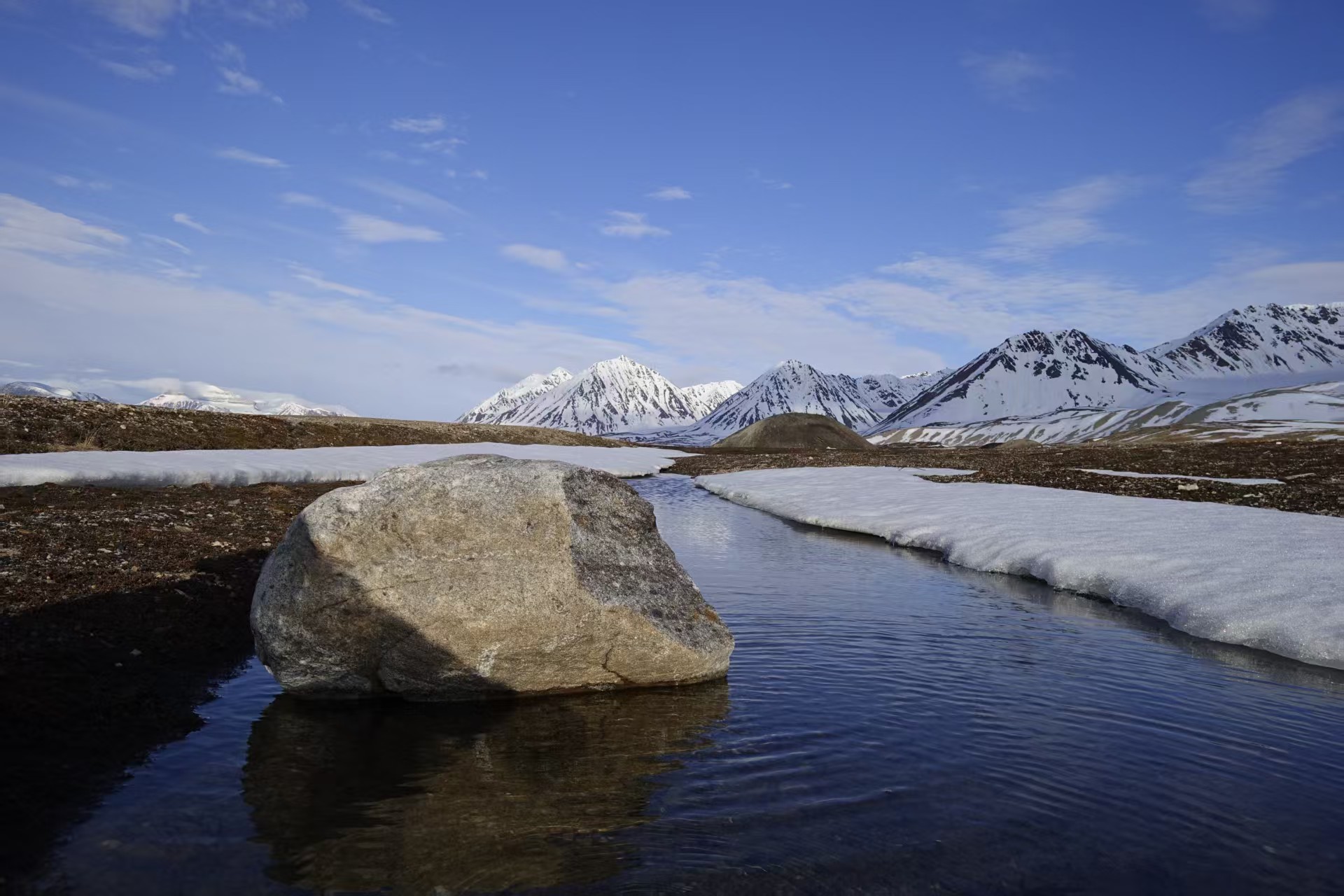Warming of 2°C Intensifies Arctic Carbon Sink but Weakens Alpine Sink, Study Finds
Date:2025-09-18

A typical Arctic tundra landscape underlain by continuous permafrost.(Image by Li Peng)
A new study published in Science Advances on September 17, led by researchers from the Institute of Atmospheric Physics of the Chinese Academy of Sciences, provides a critical answer. The research shows that a warming of around 2°C enhances the GHG sink in Arctic permafrost ecosystems. However, this gain is substantially offset by a weakening of the GHG sink in alpine permafrost regions.
Assessing the net GHG response in permafrost is notoriously complex due to the strong spatial heterogeneity of these landscapes. "We integrated data from 1,090 independent sites with measured carbon dioxide (CO2), methane (CH4), and nitrous oxide (N2O) responses to experimental warming across the Northern Hemisphere permafrost regions," said Bao Tao, the study's first author who led the data synthesis.
The study identified key regional differences driving this balance:
The research also shed light on the often-overlooked role of nitrous oxide (N2O). Warming triggered increased N2O emissions in both alpine and Arctic regions. While the absolute amount is low, thawing permafrost releases more available nitrogen into the soil, potentially leading to remarkable increases in N2O emissions. Given that N2O has a global warming potential approximately 273 times that of CO2 over a century, even small increases can have a disproportionately large impact on the climate.
"Keeping additional warming below 2°C in permafrost regions can help avoid a widespread positive permafrost–climate feedback in general," said Xu Xiyan, corresponding author of the study. "However, measures to mitigate warming in alpine permafrost ecosystems are urgent to preserve their fragile carbon sink."
The IPCC has highlighted permafrost-climate feedbacks as a major uncertainty in global carbon budgets. "We aim to uncover the patterns and mechanisms of greenhouse gas responses to warming in permafrost ecosystems, providing crucial data for improving climate projections," said Jia Gensuo, a co-author of the study.
